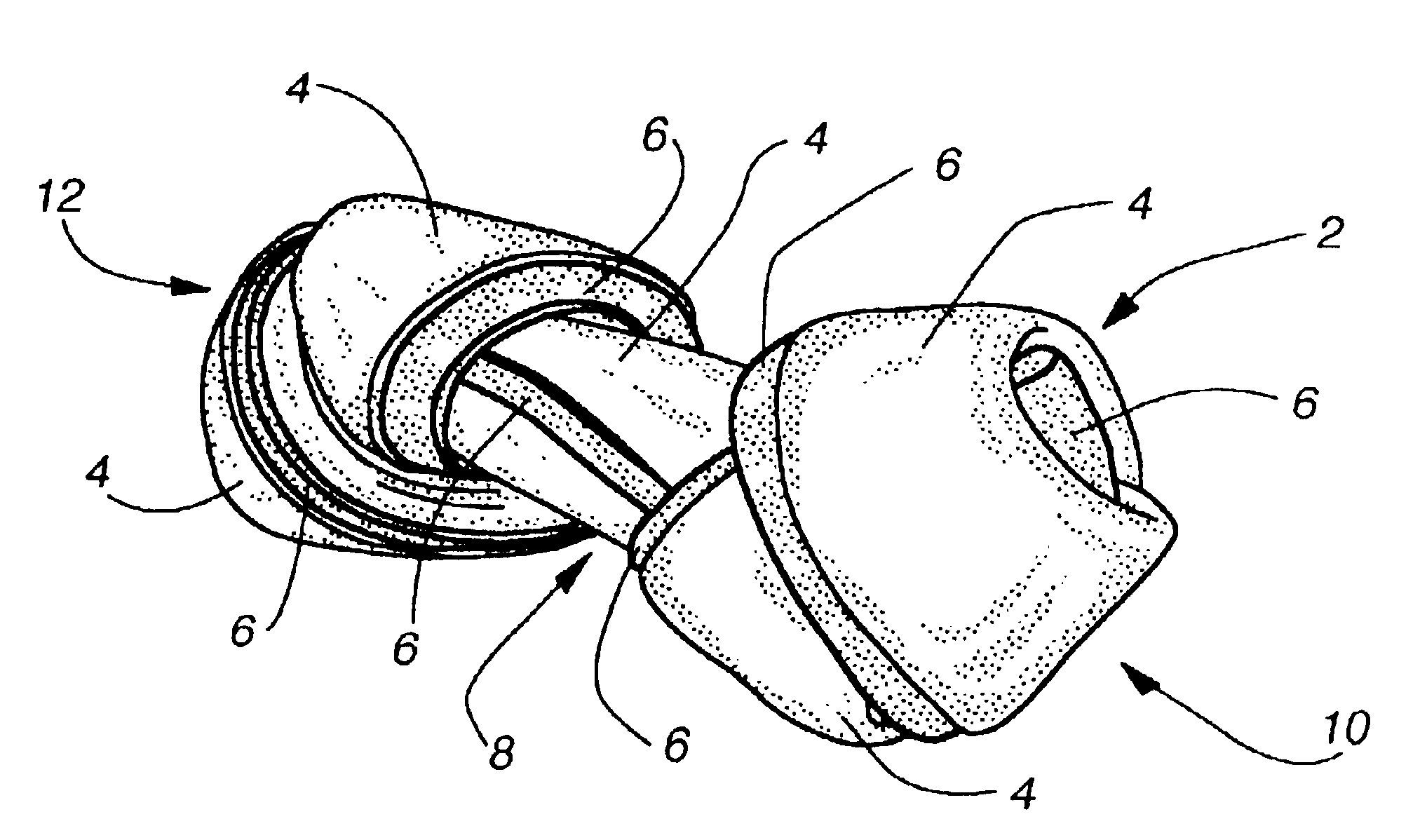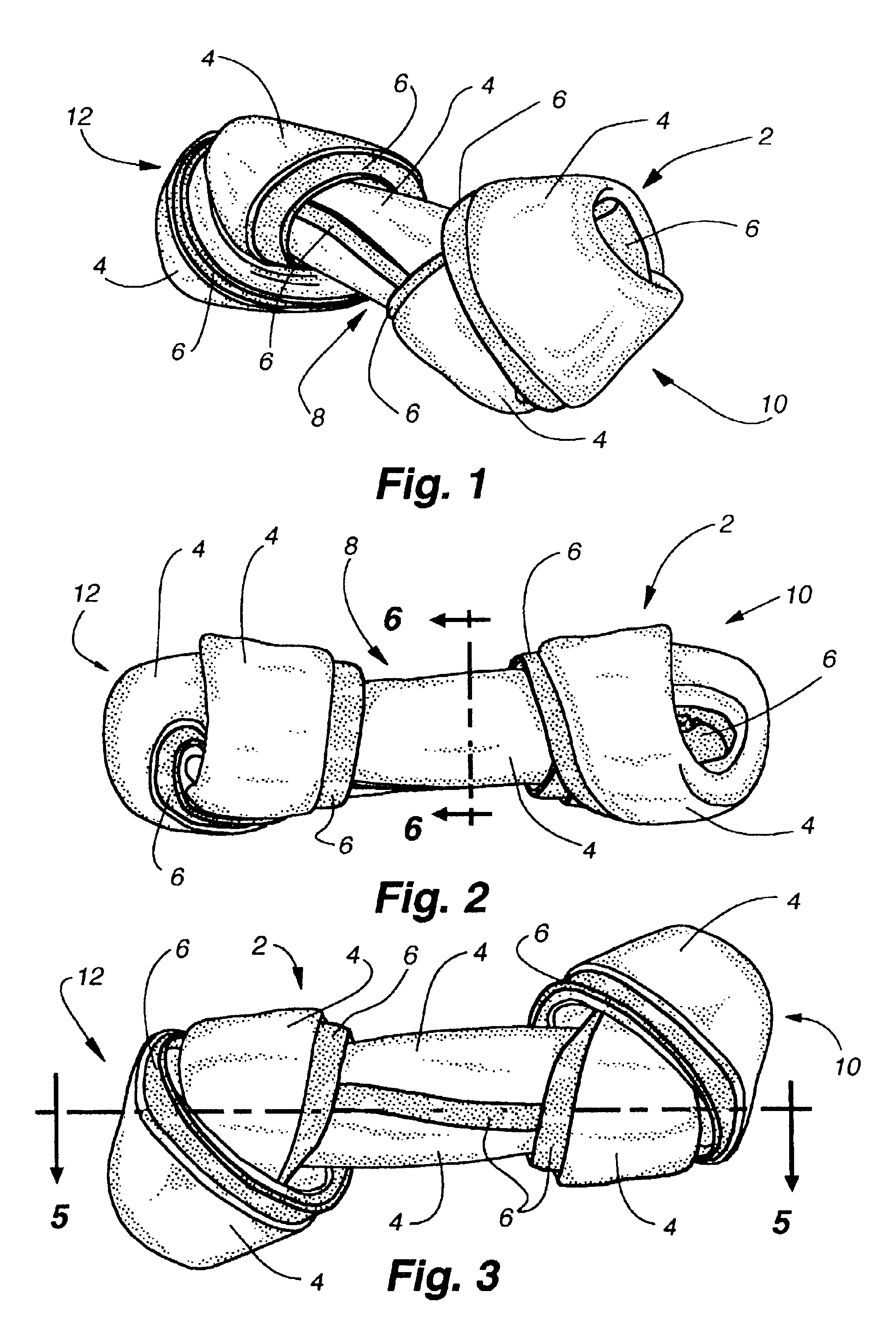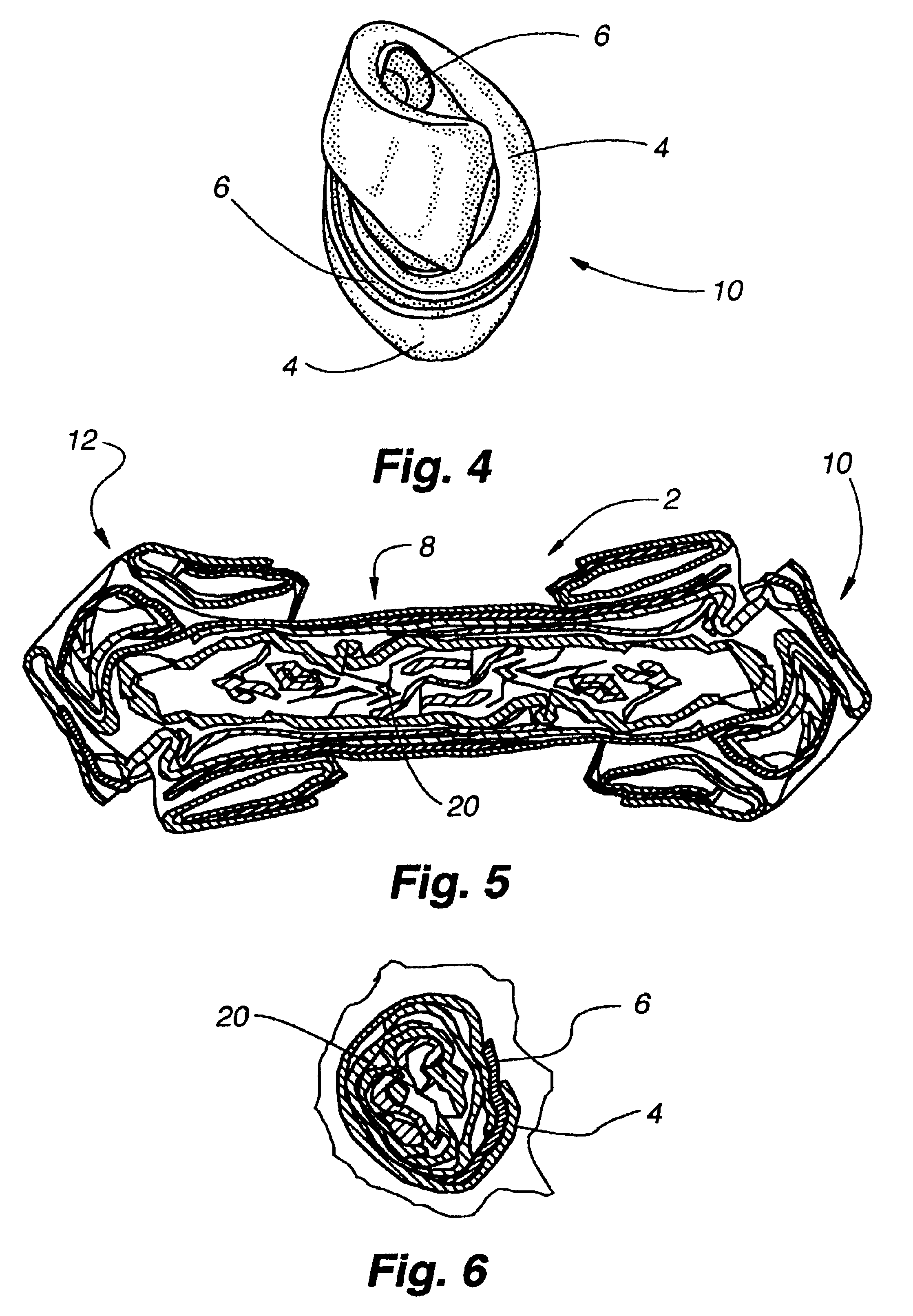Rawhide pet chew
a chewing and rawhide technology, applied in the field of chewing toys, can solve the problems of re-suspension of saliva, animal waste, and inability of pet owners to take advantage of this easy way to promote oral hygiene for their pets,
- Summary
- Abstract
- Description
- Claims
- Application Information
AI Technical Summary
Benefits of technology
Problems solved by technology
Method used
Image
Examples
first embodiment
The inventive pet chew may be prepared in multiple forms that may variously appeal to different animals. A first embodiment is a classic dog bone-shaped pet chew 2 as depicted in FIGS. 1-6. The bone-shaped pet chew 2 is composed of a first strip 4 of rawhide generally wrapped around a second strip 6 of rawhide. The first strip 4 of rawhide may be a washed and whitened strip of split lime hide. The second strip 6 of rawhide may also be a washed and whitened strip of split lime hide. However, the second strip 6 of rawhide is also flavored according to one of the processes described above.
In order to create the bone-shaped pet chew 2, the following steps as shown in FIGS. 31-40 may be undertaken while both strips are still at least slightly wet and pliable due to their high moisture content after washing or flavoring. For example, in a desirably sized commercial embodiment, the first strip 4 of rawhide may be a rectangular-shaped piece about three feet long and six inches wide. The sec...
second embodiment
the invention is depicted in FIGS. 7-9 as a roll-shaped pet chew 22. The roll-shaped pet chew 22 may be formed of a first sheet 24 of rawhide cut in the shape of square or rectangle and a second sheet 26 of rawhide, also cut in the shape of a similarly sized square or rectangle. The second sheet 26 of rawhide is flavored according to one of the processes described above. The second sheet 26 is placed upon the first sheet 24 in the same general orientation, with one edge extending beyond an adjacent edge of the first sheet 24. The first sheet 24 and second sheet 26 are then rolled together, the second sheet 26 concentrically within the first sheet 24 to form a cylindrical roll 22. As viewed from an end in FIG. 9, the roll-shaped pet chew 22 appears as a two-layered spiral pattern. While the second sheet 26 is substantially enclosed within the first sheet 24, the roll-shaped pet chew 22 is rolled such that an edge of the second sheet 26 extends beyond the exterior edge of the first sh...
PUM
 Login to View More
Login to View More Abstract
Description
Claims
Application Information
 Login to View More
Login to View More - R&D
- Intellectual Property
- Life Sciences
- Materials
- Tech Scout
- Unparalleled Data Quality
- Higher Quality Content
- 60% Fewer Hallucinations
Browse by: Latest US Patents, China's latest patents, Technical Efficacy Thesaurus, Application Domain, Technology Topic, Popular Technical Reports.
© 2025 PatSnap. All rights reserved.Legal|Privacy policy|Modern Slavery Act Transparency Statement|Sitemap|About US| Contact US: help@patsnap.com



